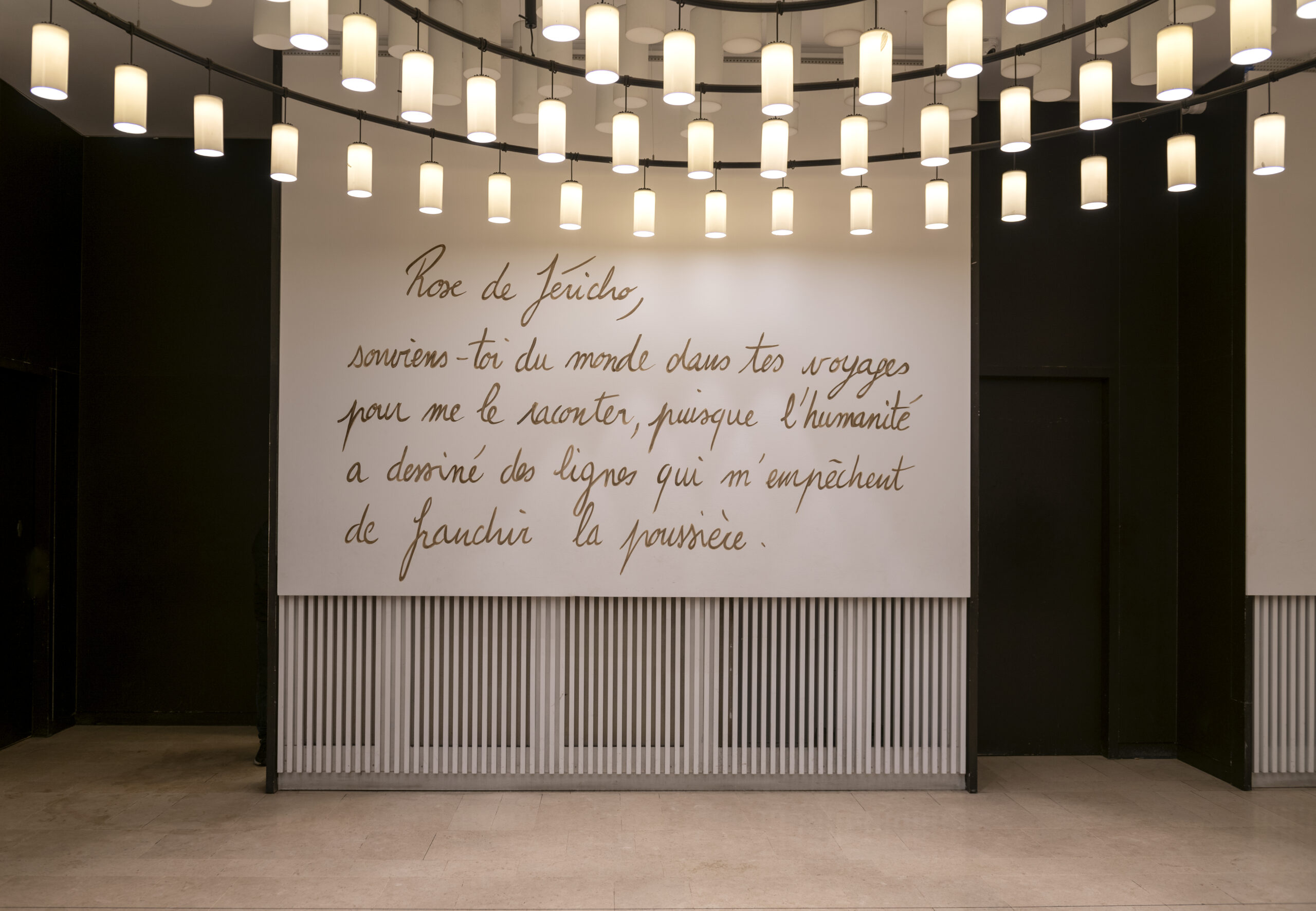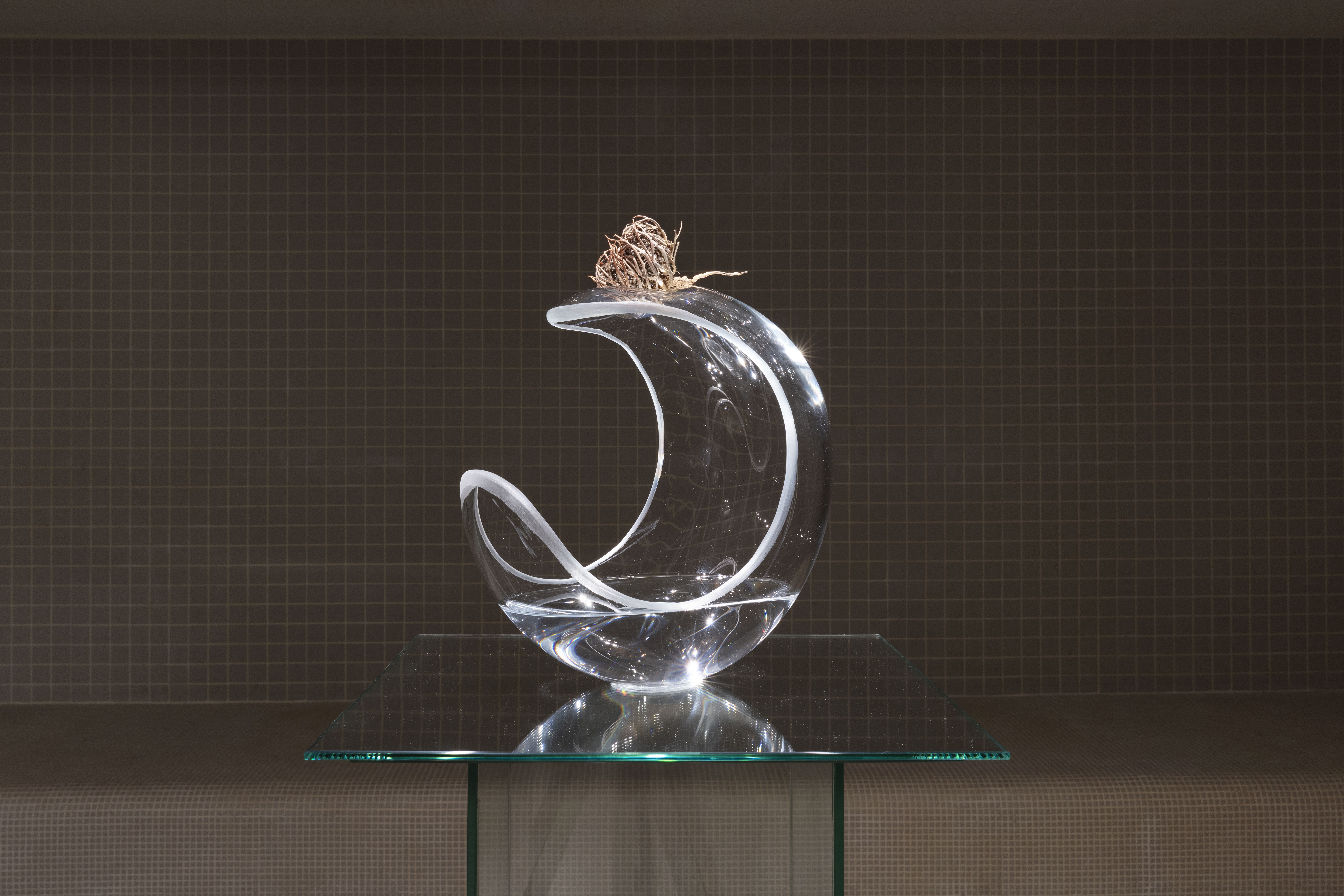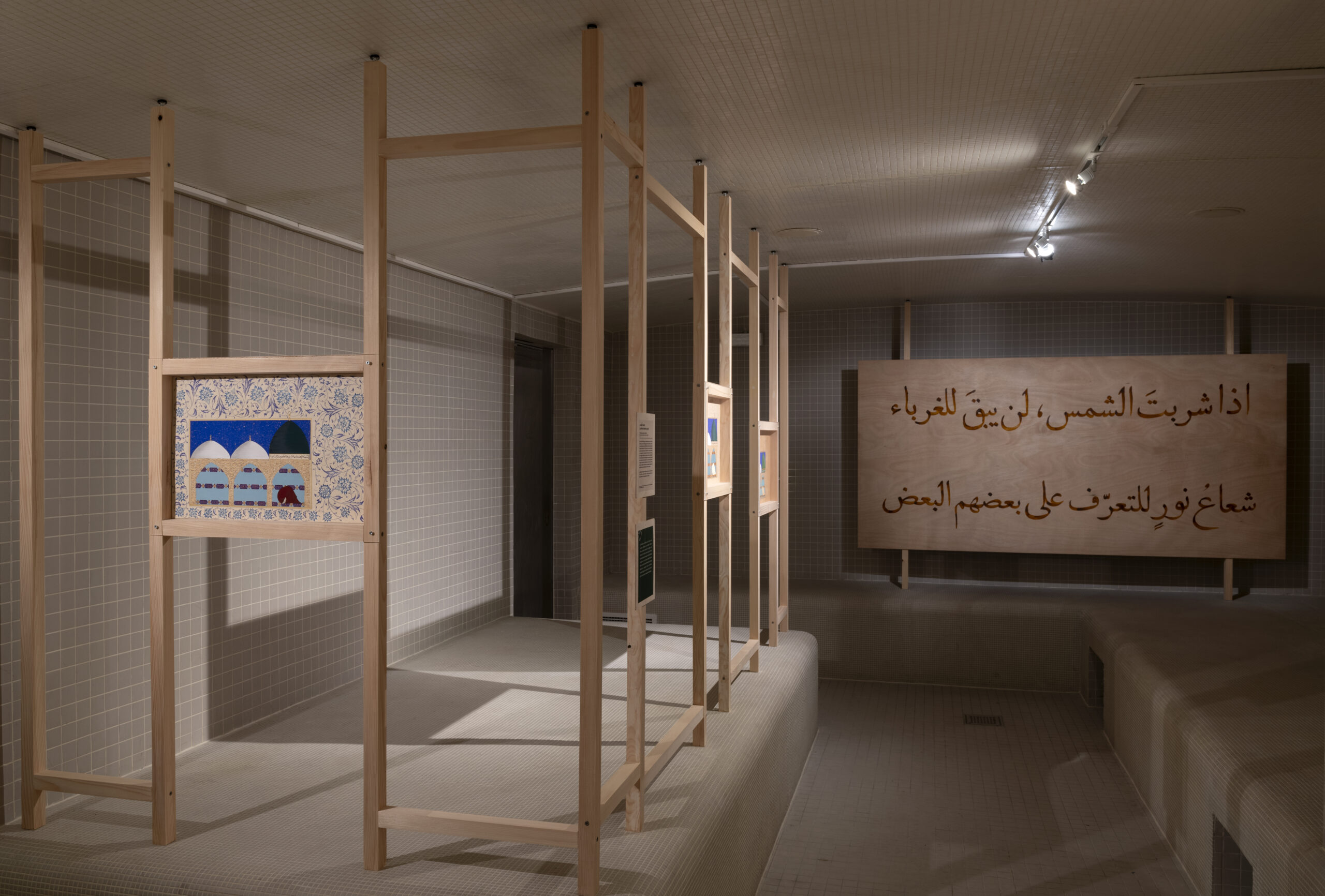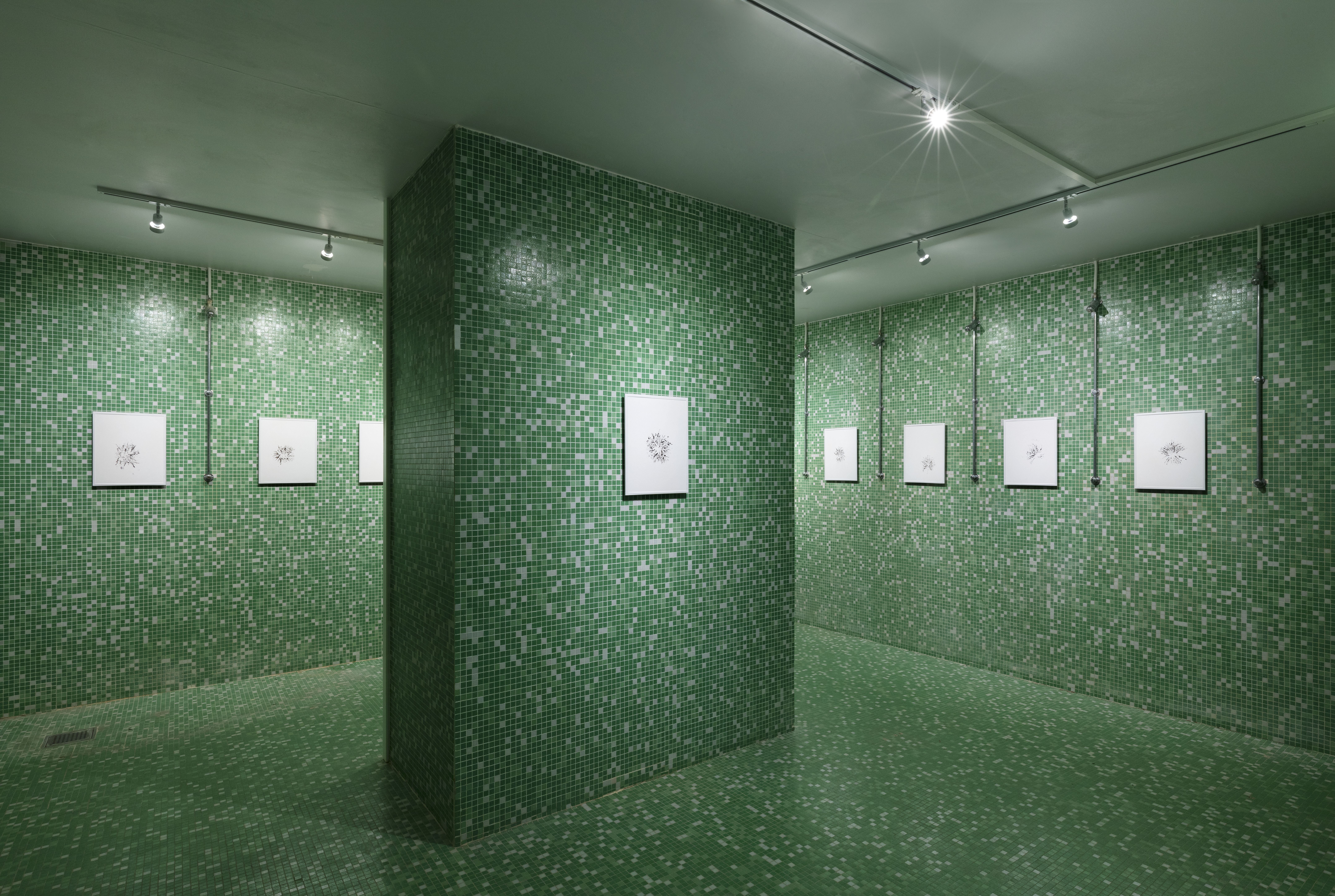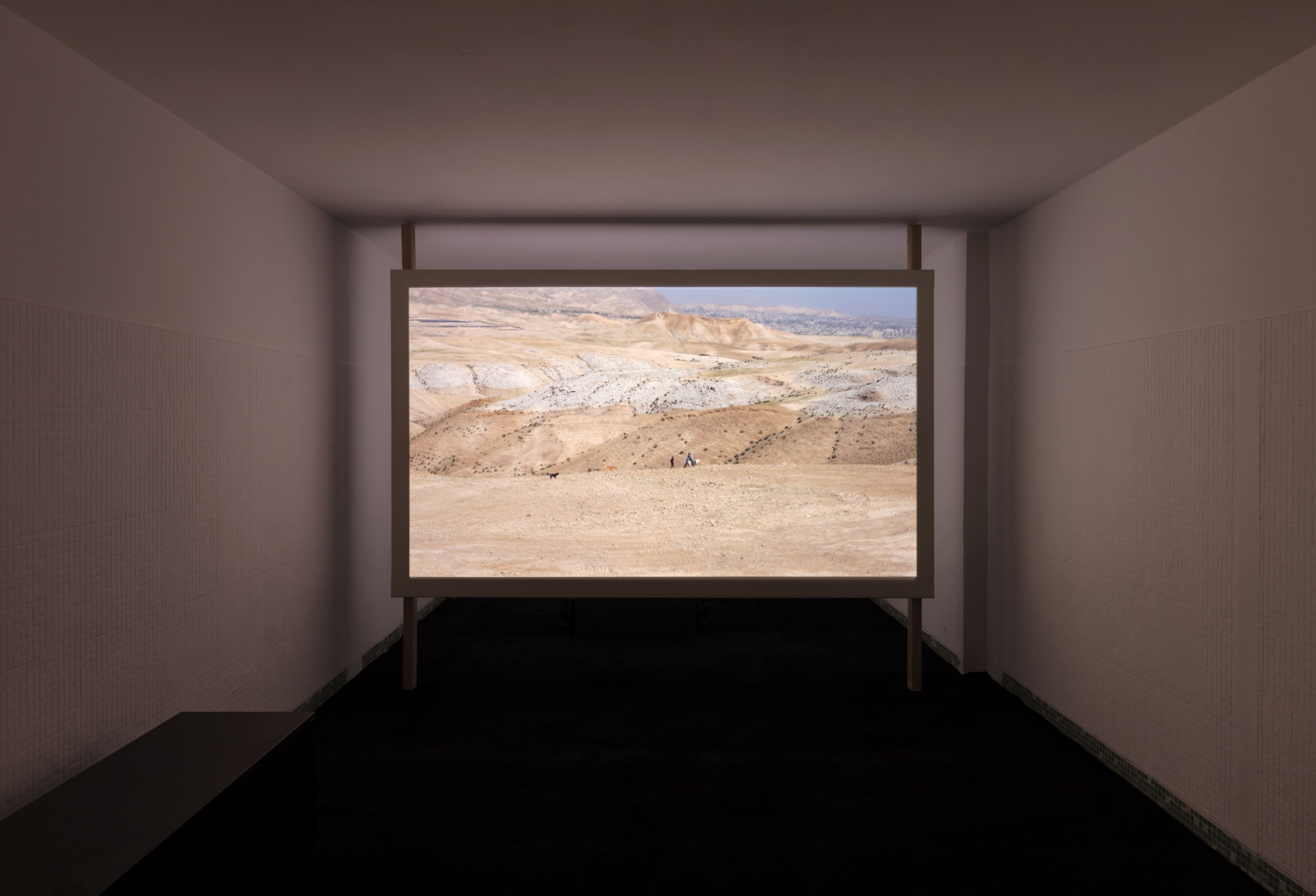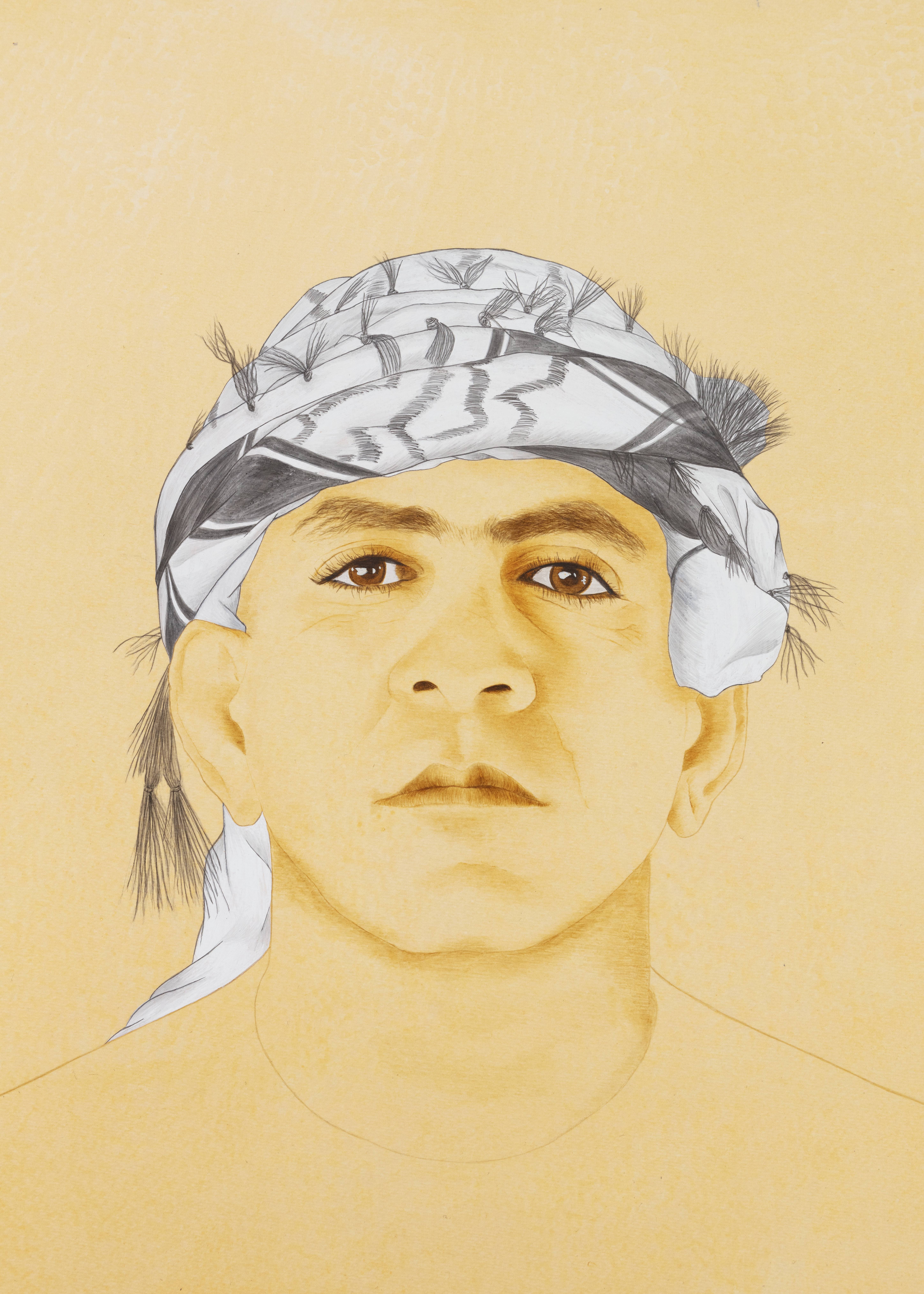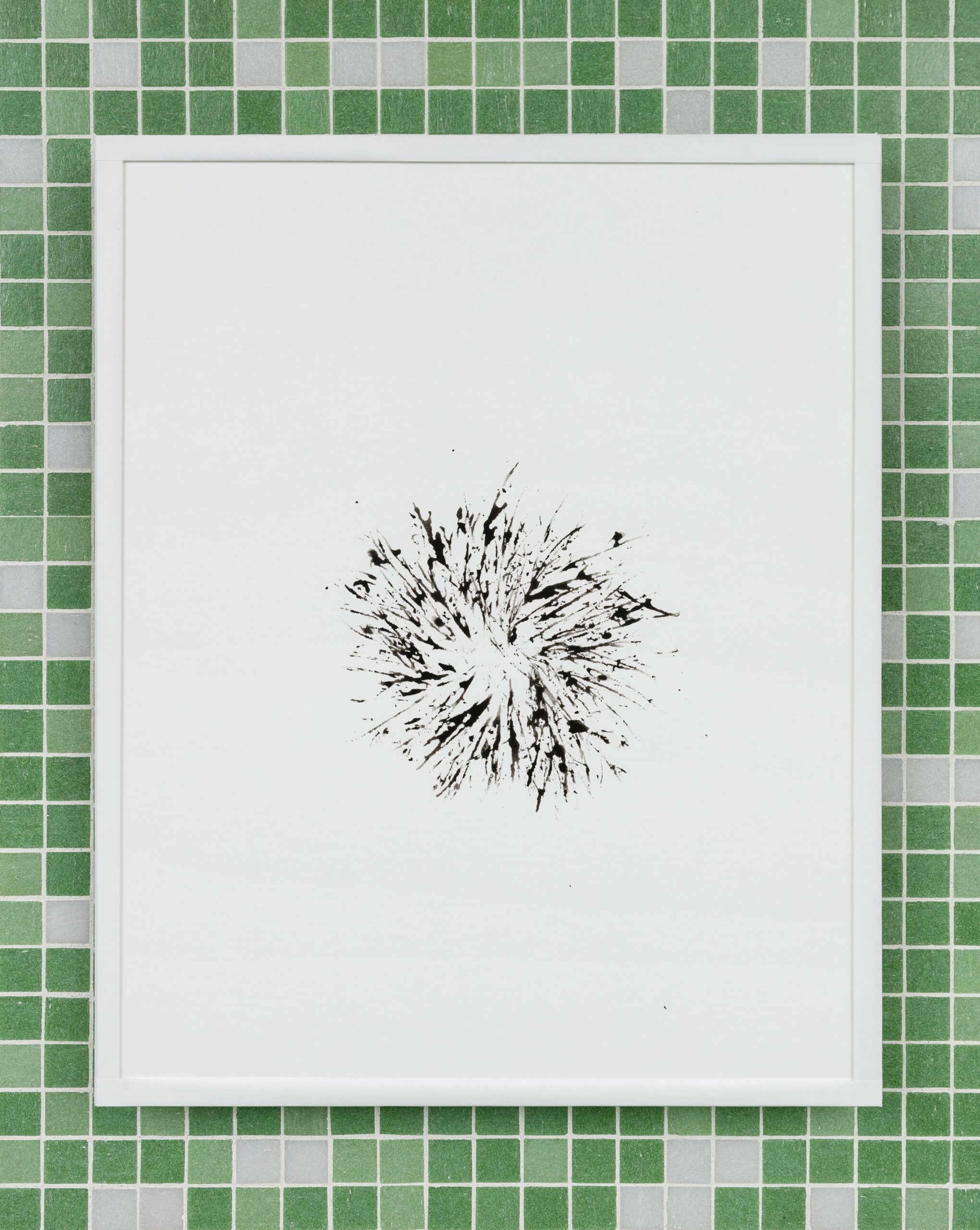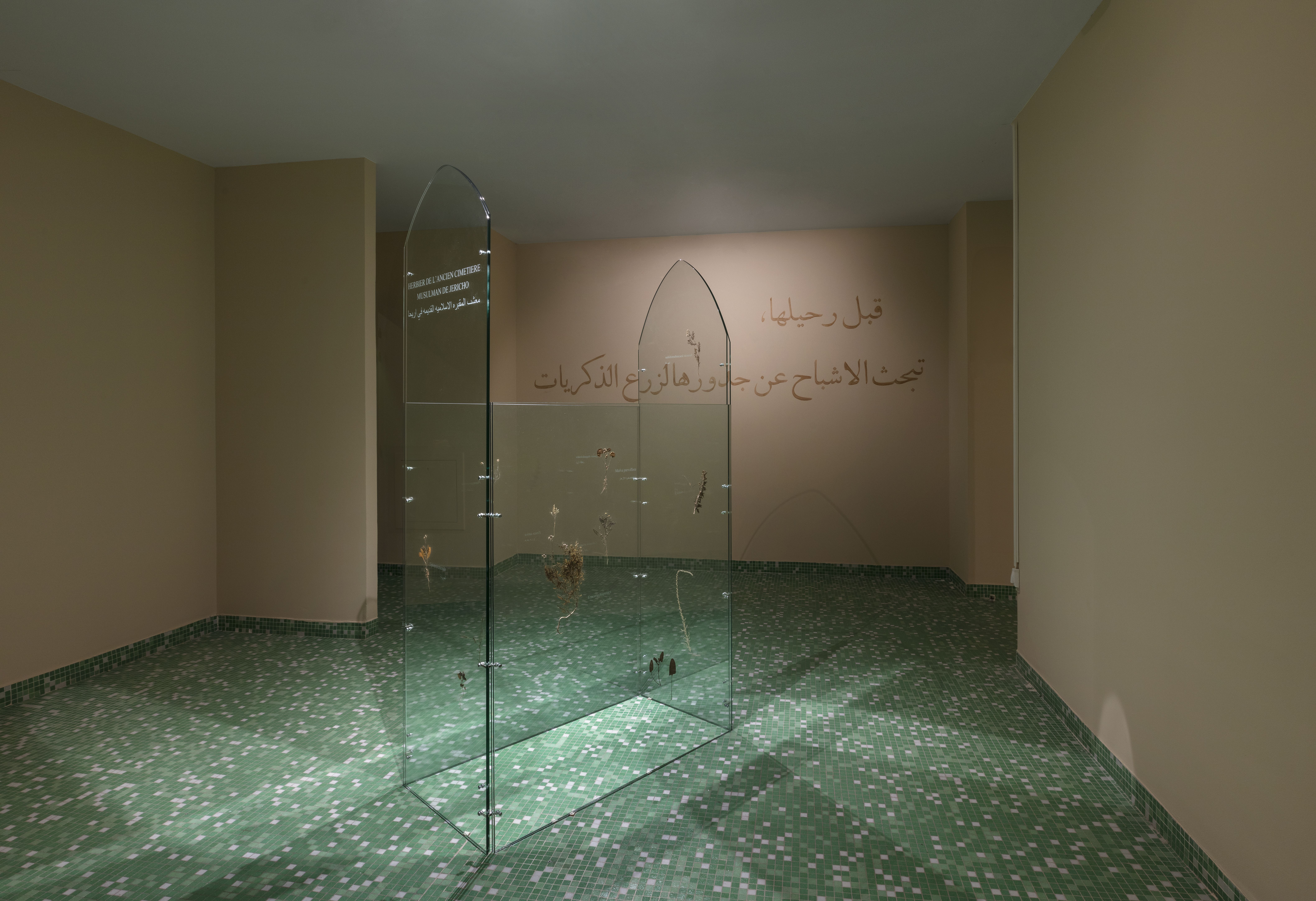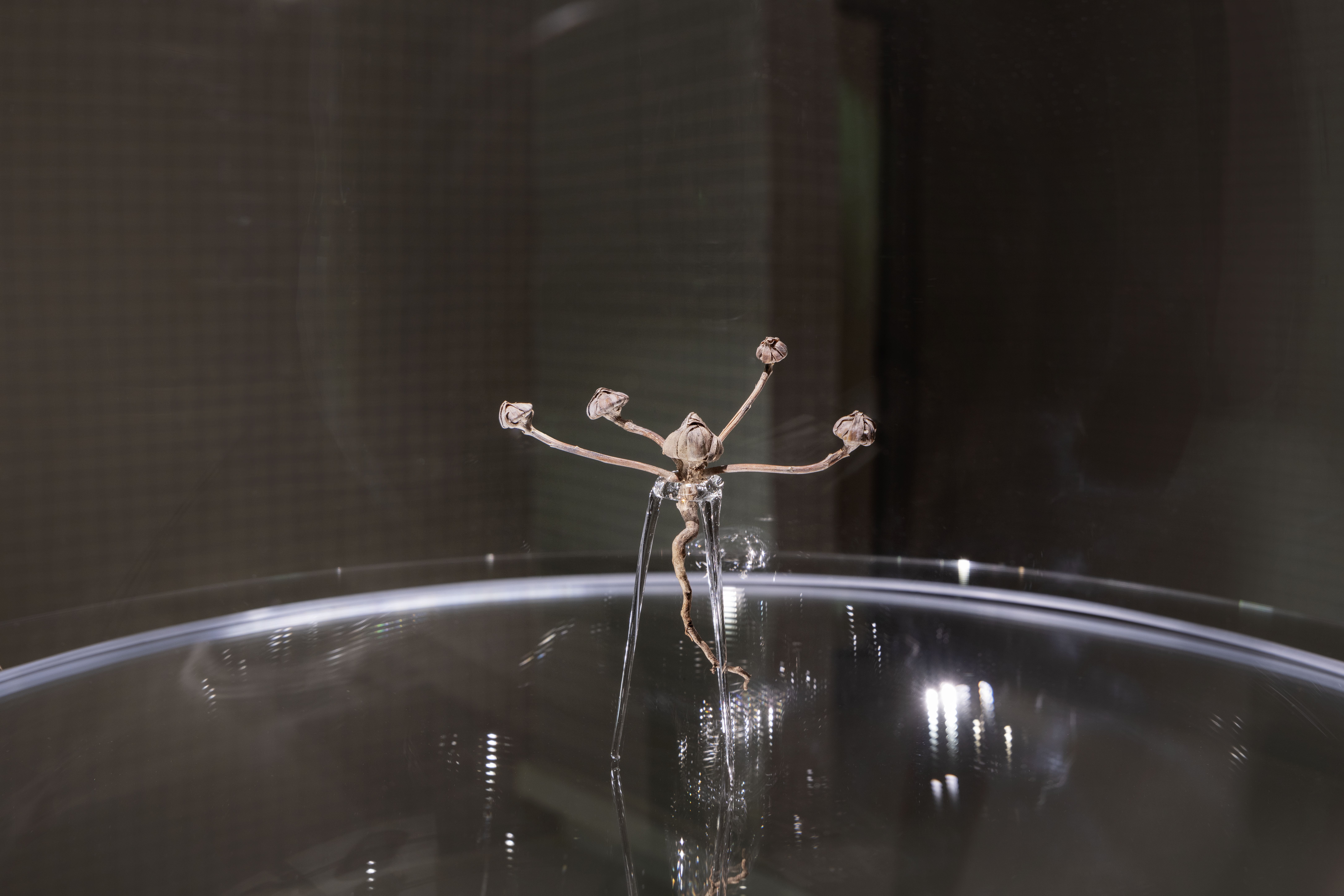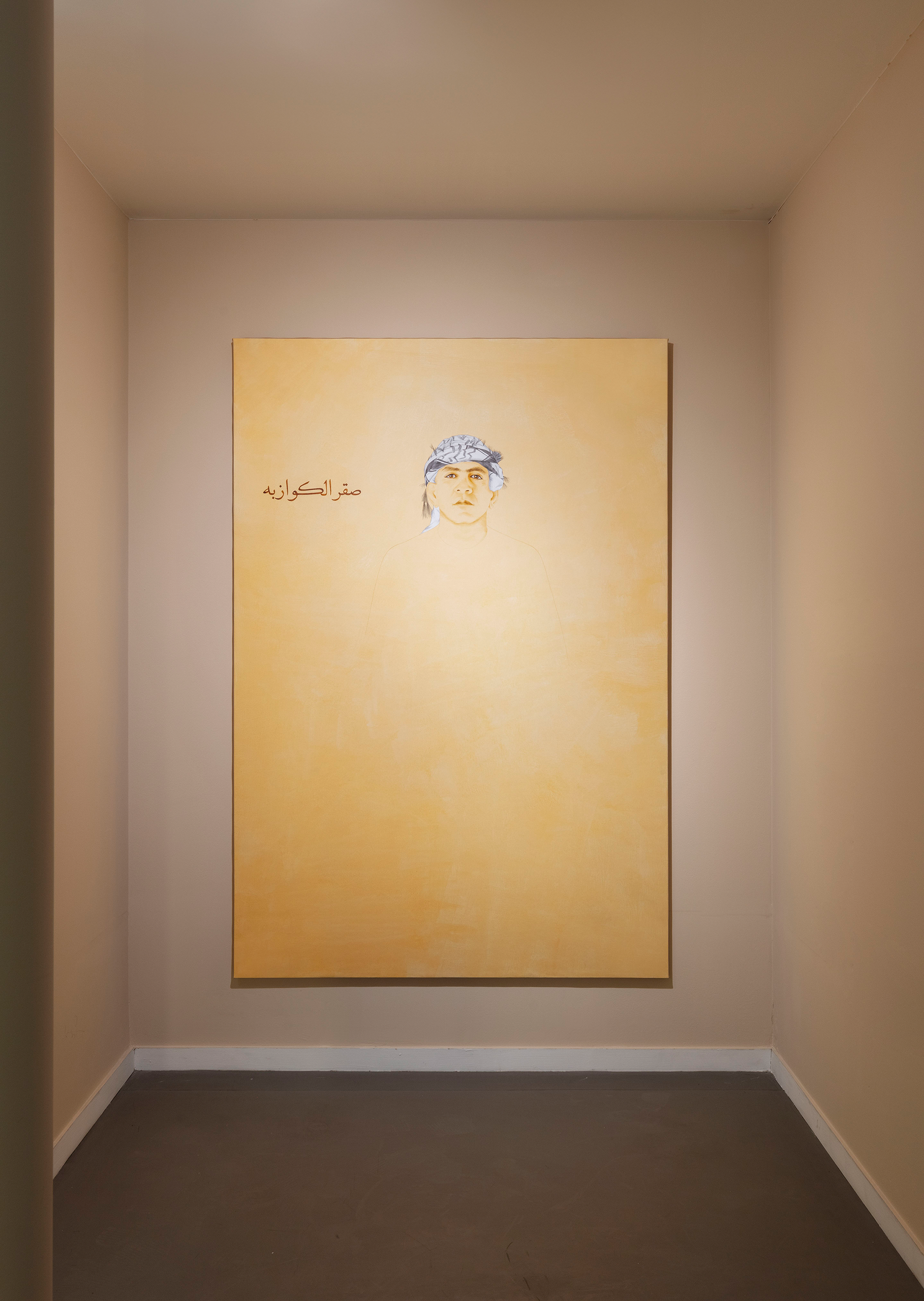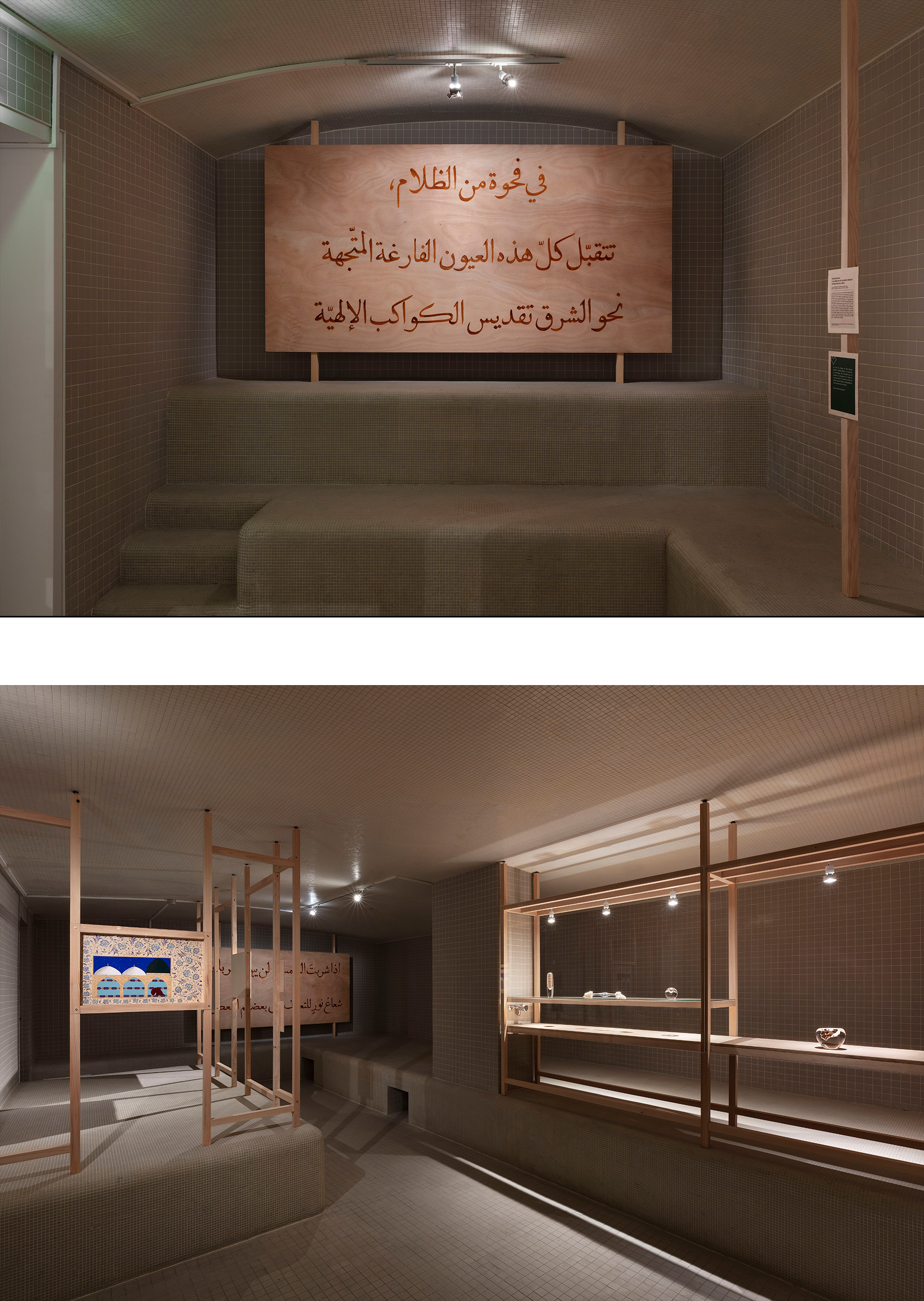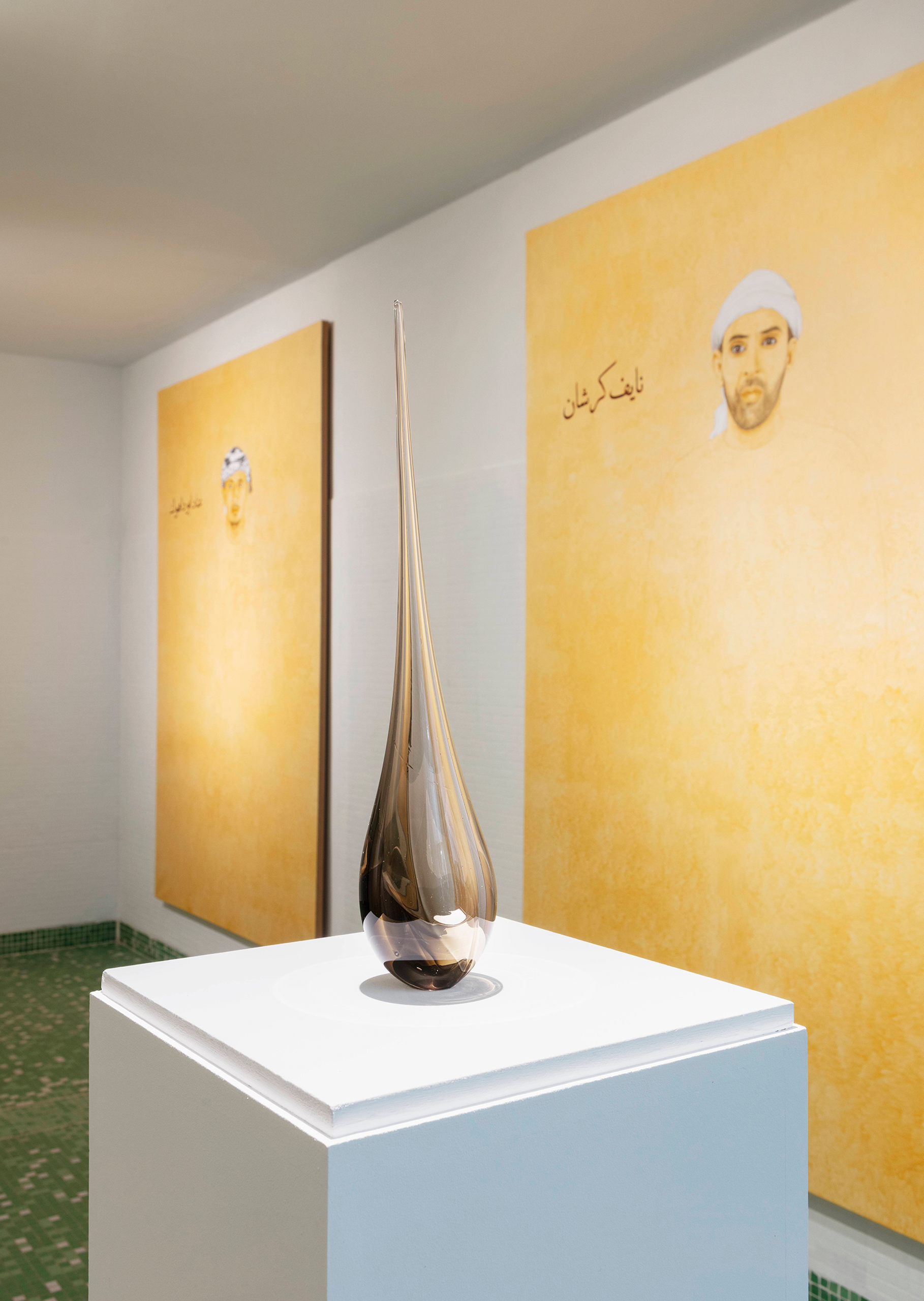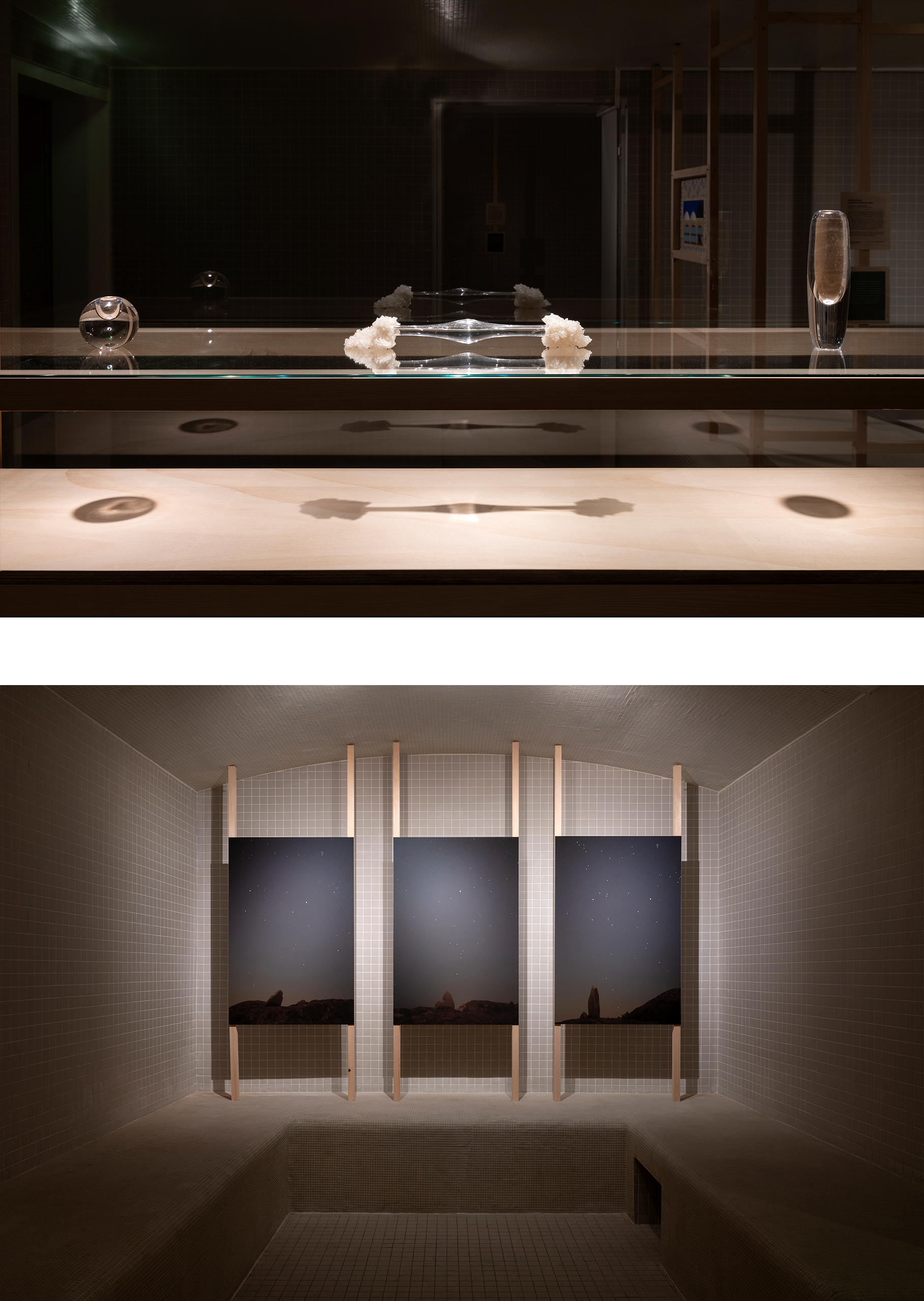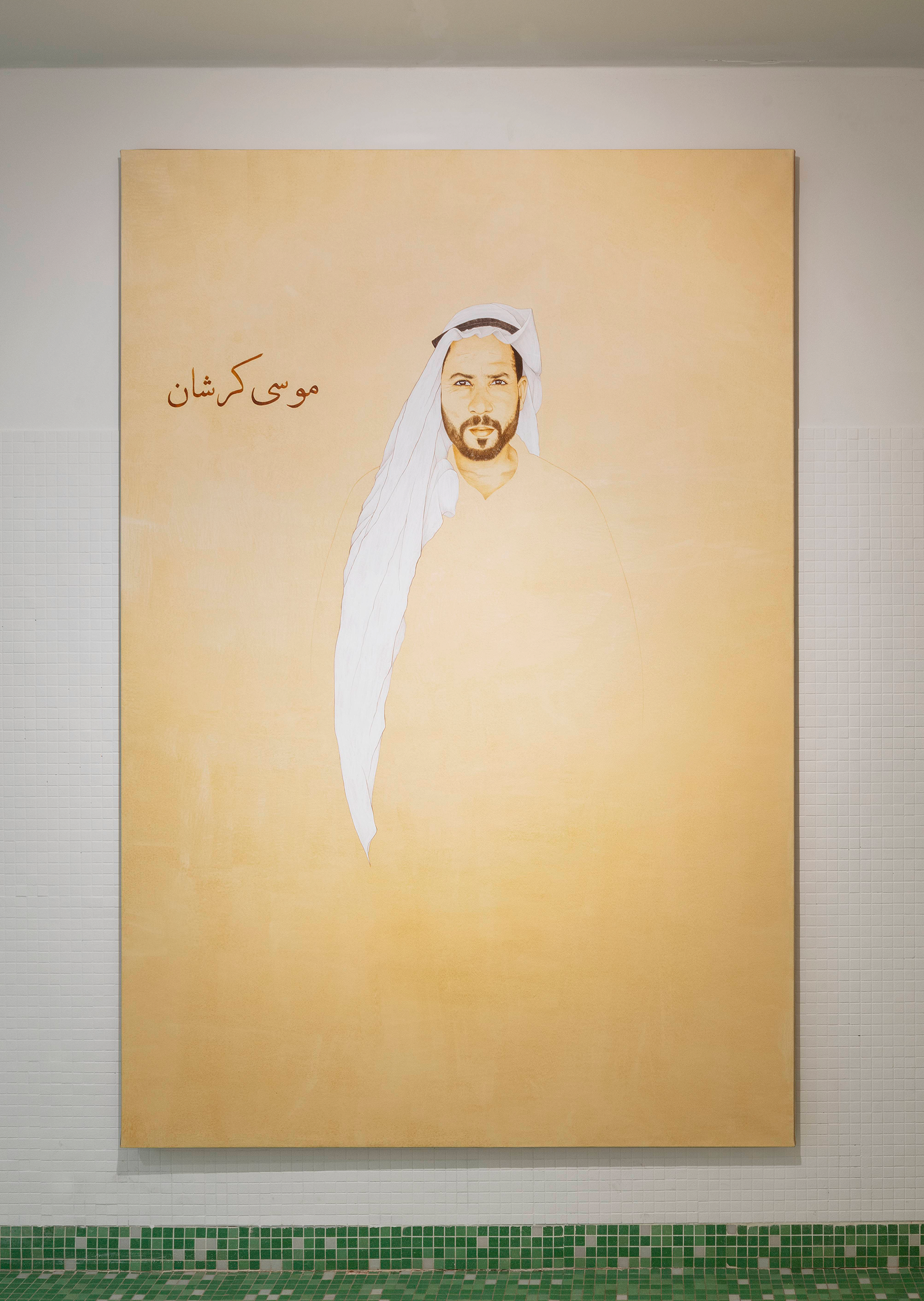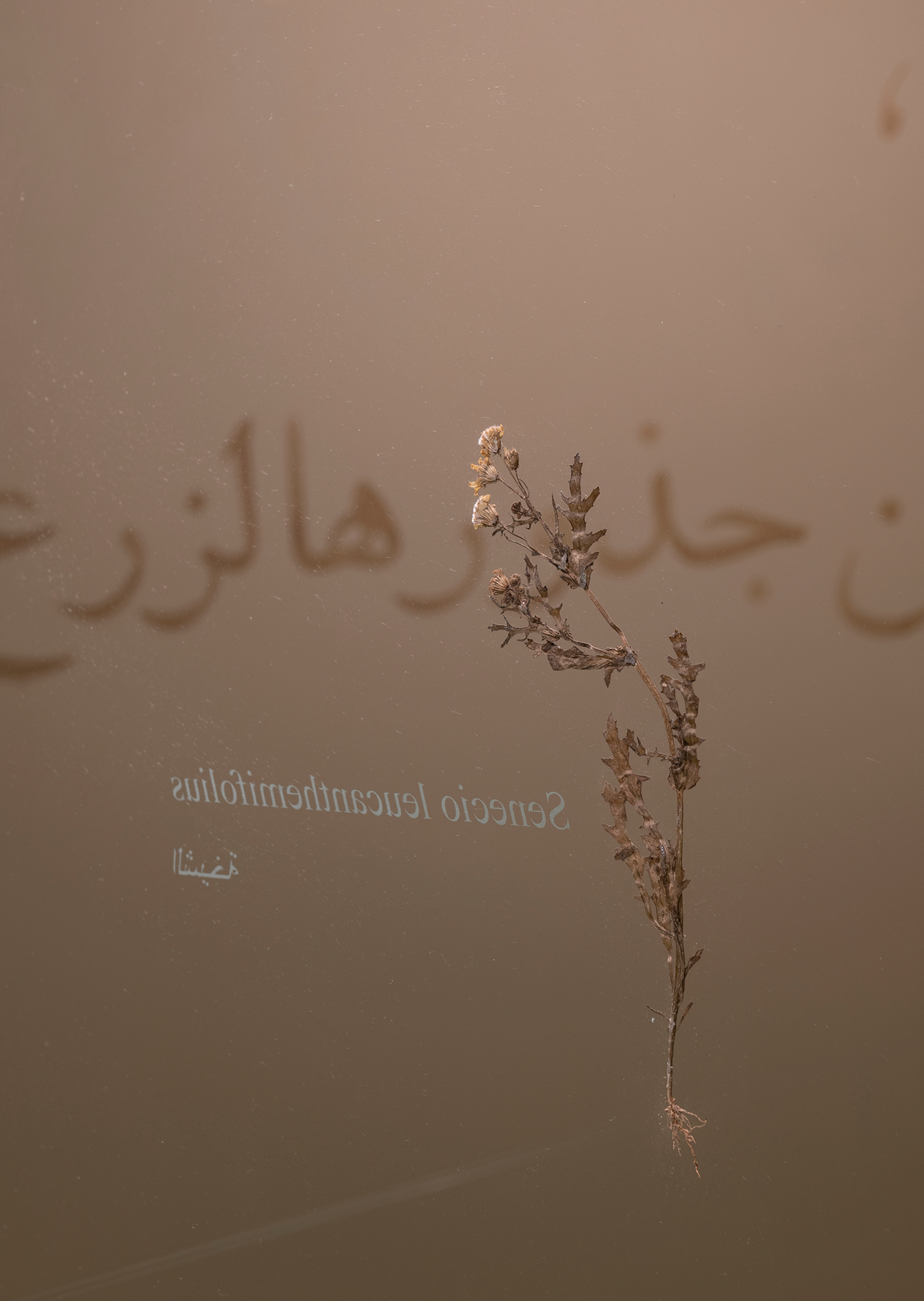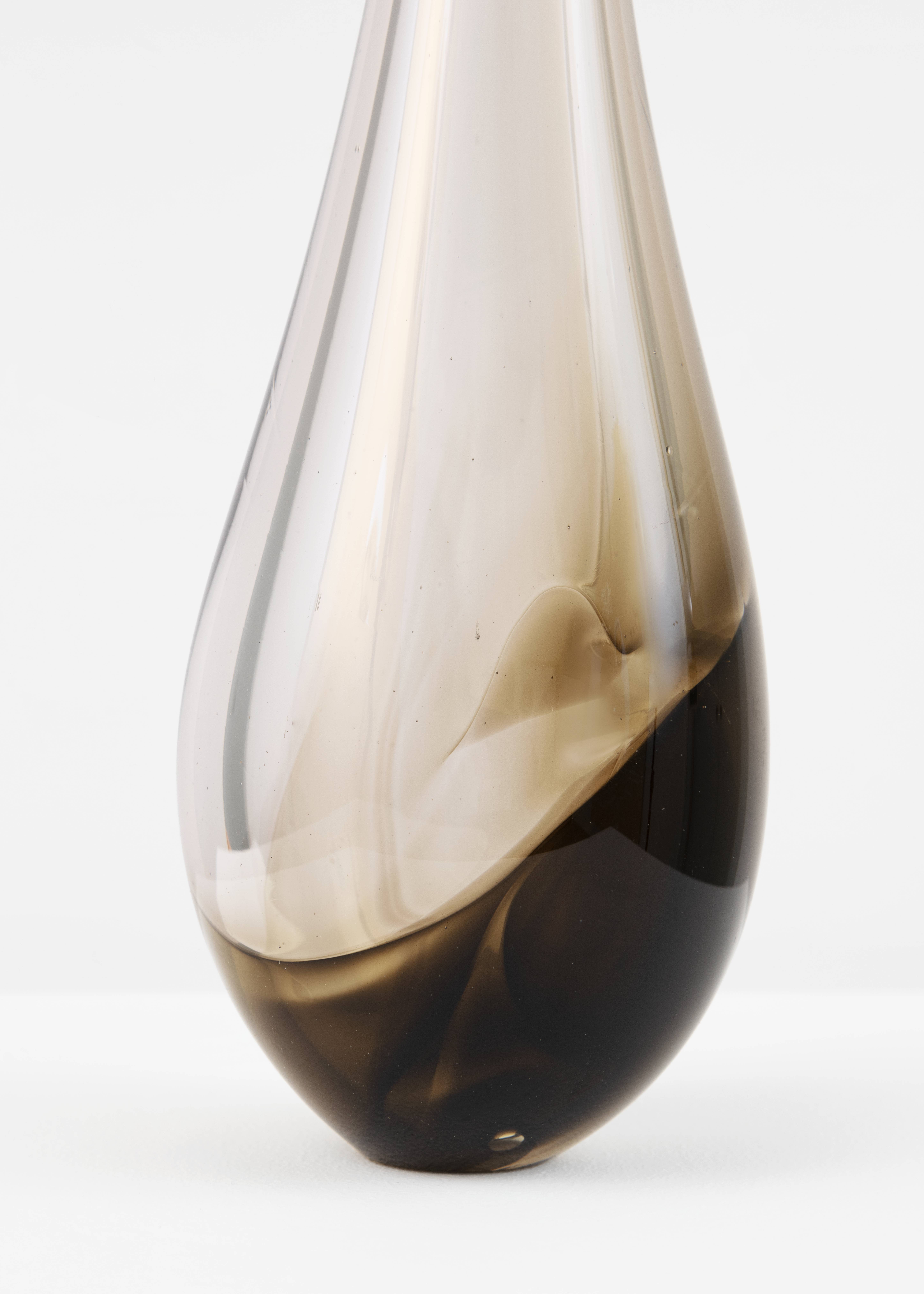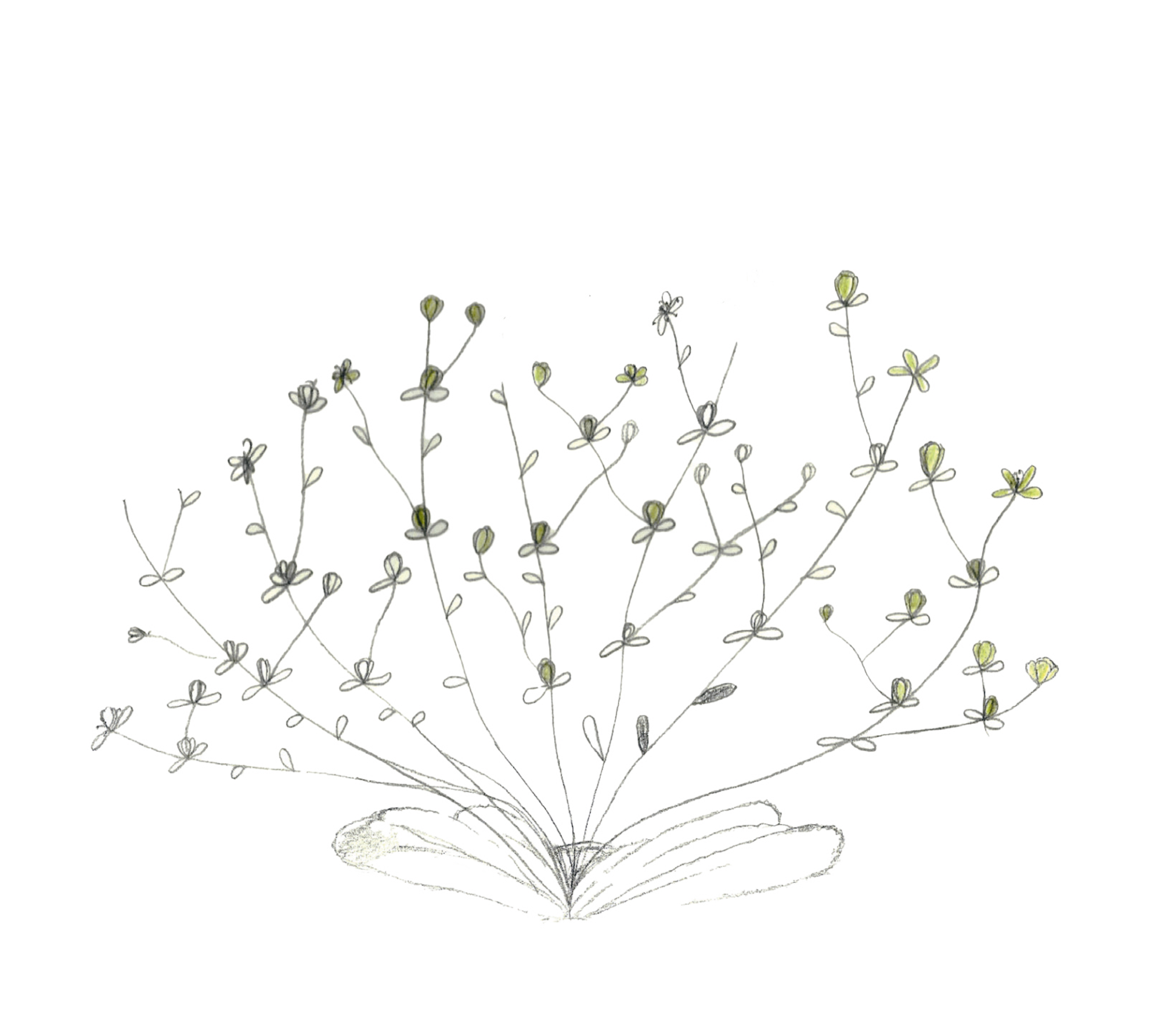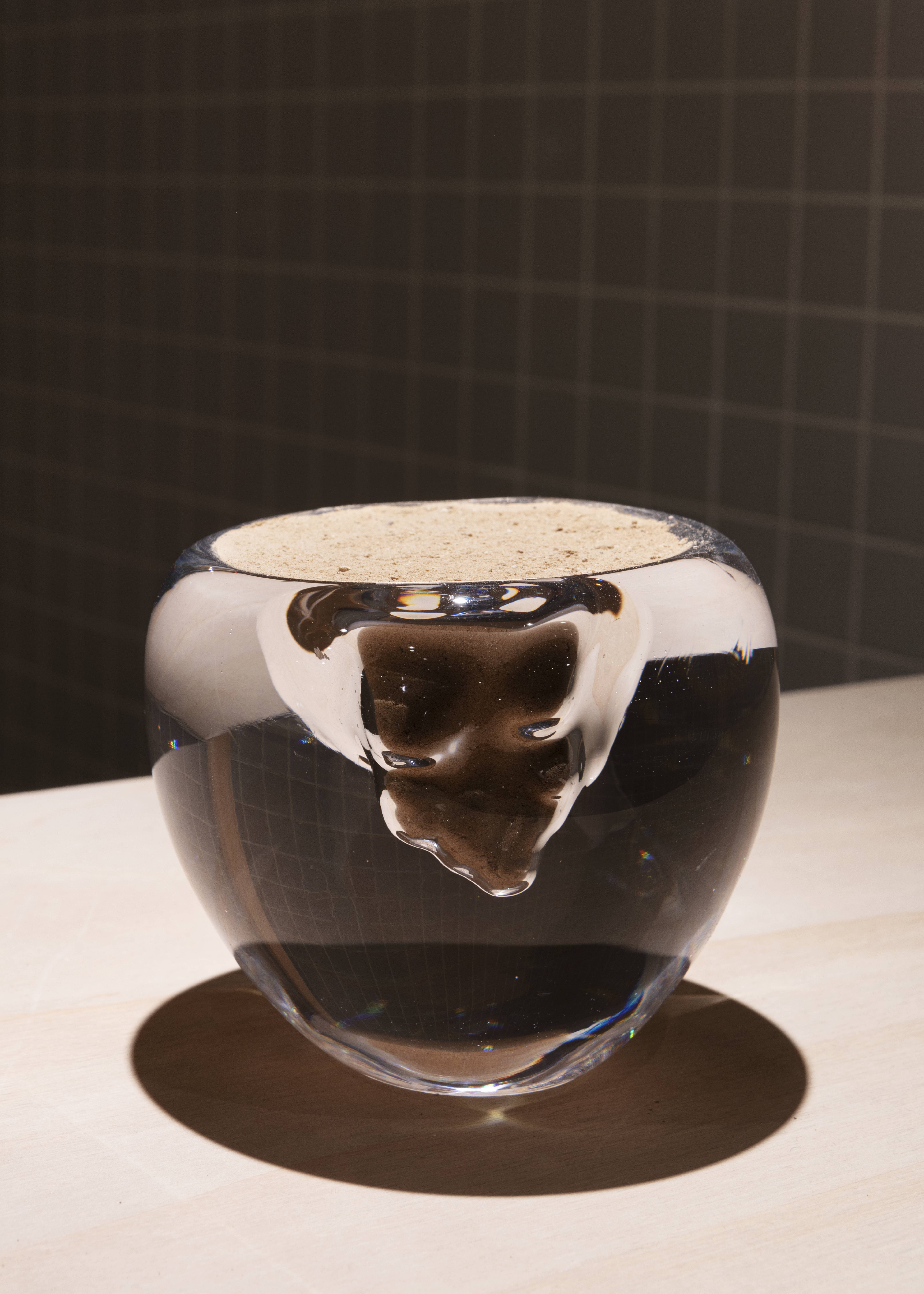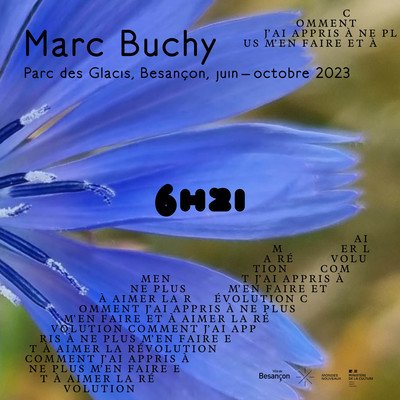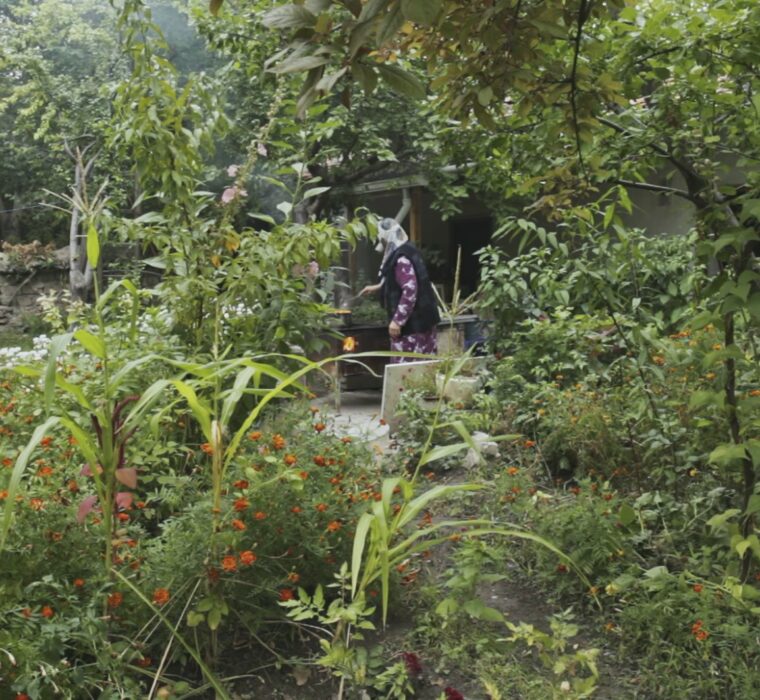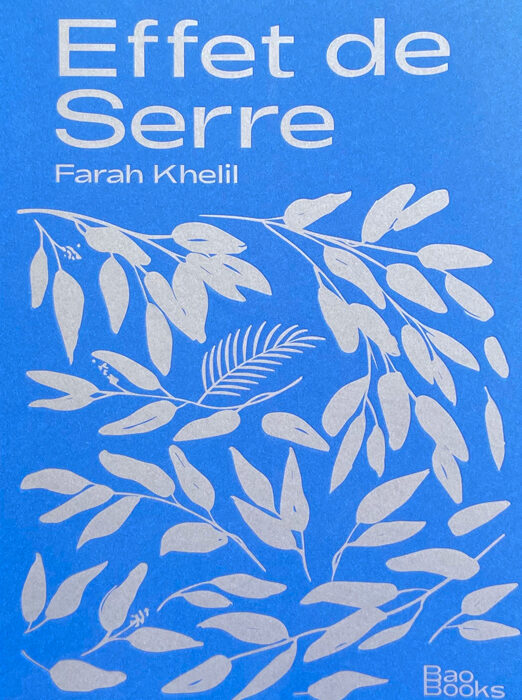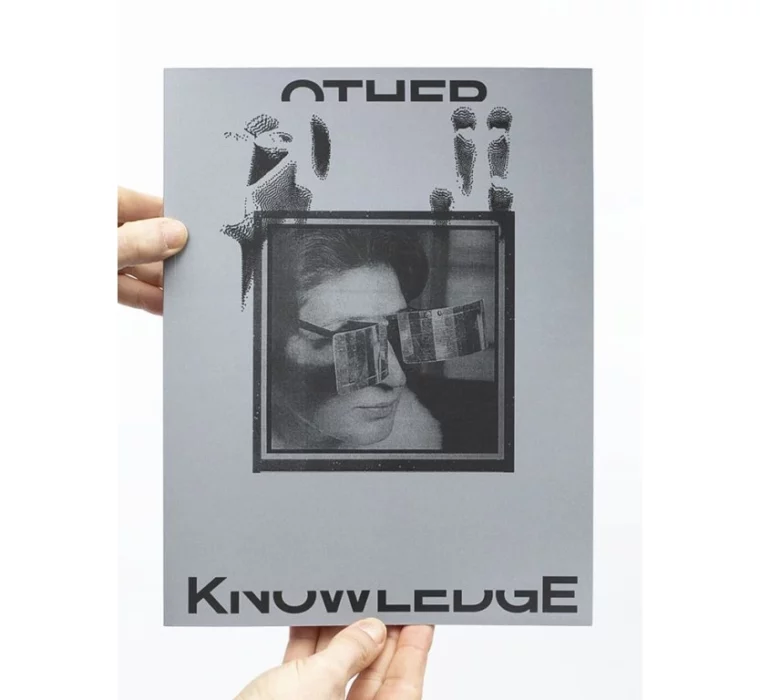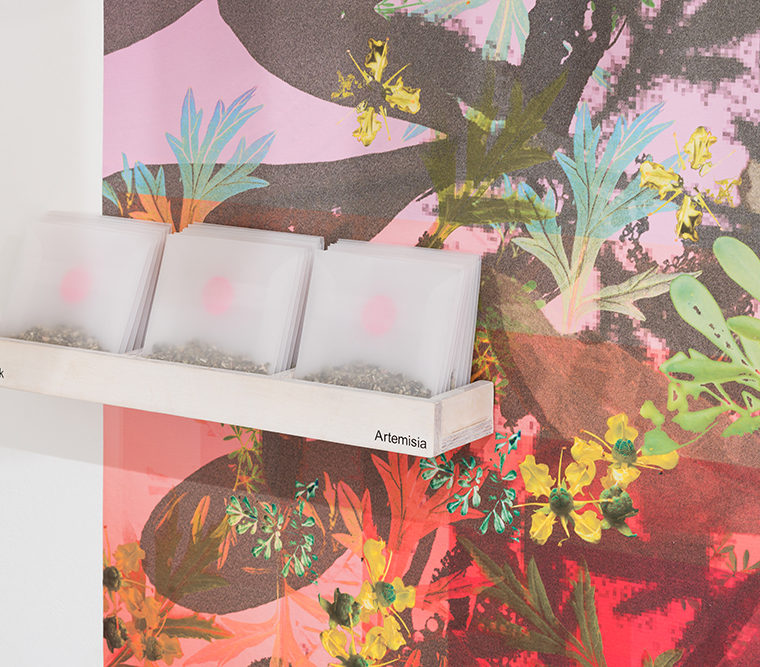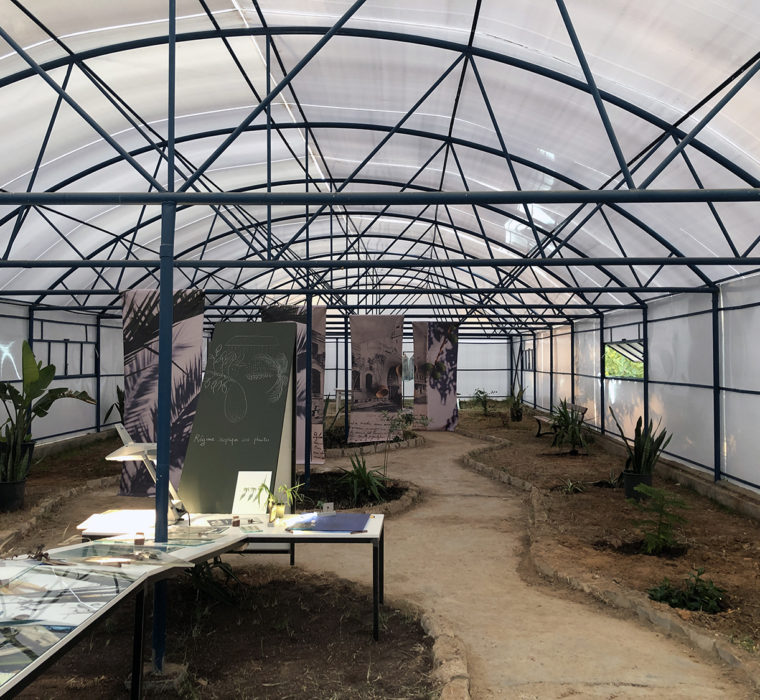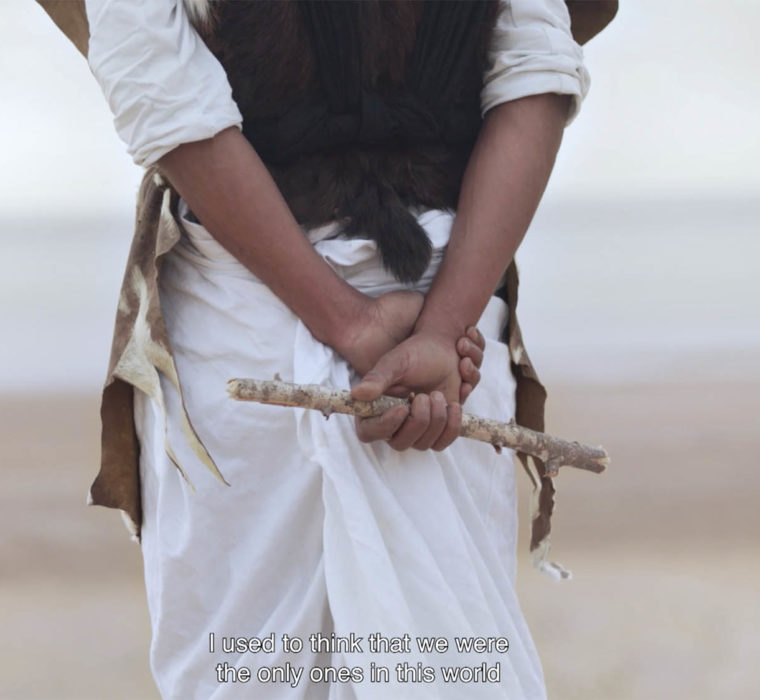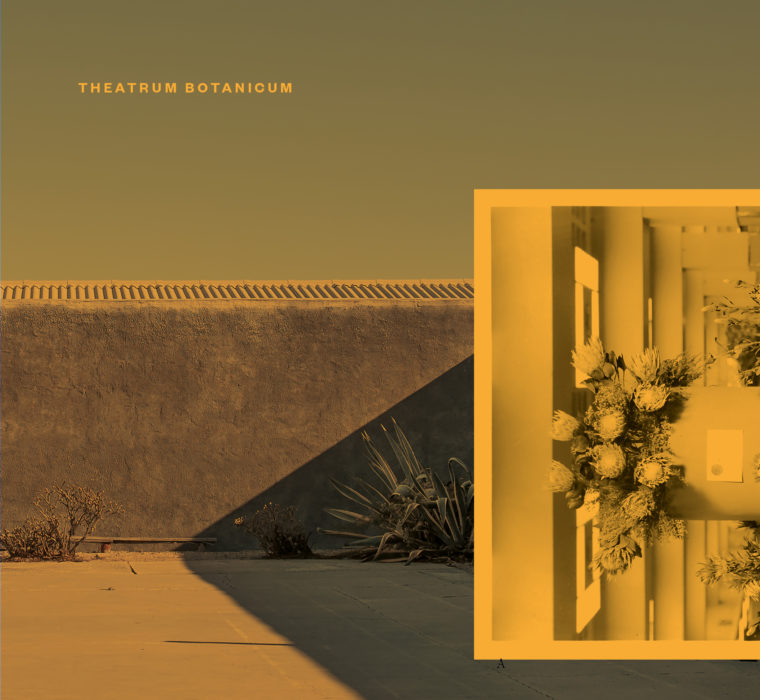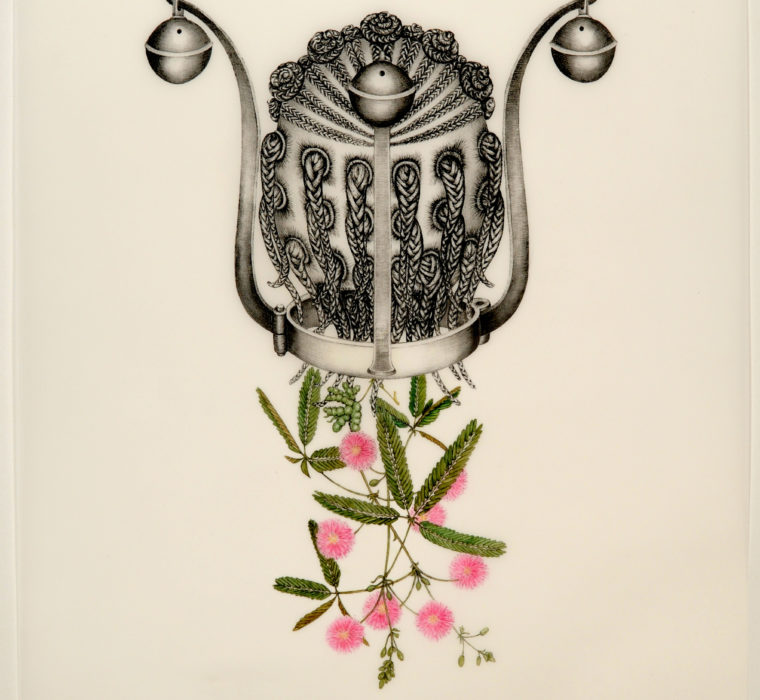La Rose de Jéricho
Solo Show
Aurélia Zahedi
La Rose de Jéricho
Solo Show
Aurélia Zahedi
For thousands of years, this mythical plant concealed in the folds of the desert has stirred the imagination of those who encounter it or look out for its traces. Although humble and modest, nestling low to the ground, the plant is associated with resurrection and the sacred. It is said to be immortal, nomadic, a healer and women’s ally. Aurélia Zahedi set off in its footsteps in 2016 and has continued her quest ever since, trying to determine if this plant is indeed intrinsically connected to Jericho, the city whose name it bears. Travelling across the Sahra’ charq al-Quds in Palestine (the desert to the east of Jerusalem) alongside the Bedouins of Nabi Moussa, Aurélia Zahedi listens to the silence and embraces the diversity of perspectives, composing a protean narrative made up of several voices.
For thousands of years, this mythical plant concealed in the folds of the desert has stirred the imagination of those who encounter it or look out for its traces. Although humble and modest, nestling low to the ground, the plant is associated with resurrection and the sacred. It is said to be immortal, nomadic, a healer and women’s ally. Aurélia Zahedi set off in its footsteps in 2016 and has continued her quest ever since, trying to determine if this plant is indeed intrinsically connected to Jericho, the city whose name it bears. Travelling across the Sahra’ charq al-Quds in Palestine (the desert to the east of Jerusalem) alongside the Bedouins of Nabi Moussa, Aurélia Zahedi listens to the silence and embraces the diversity of perspectives, composing a protean narrative made up of several voices.
Three botanical species share the name of Rose of Jericho. But does a genuine one actually exist? It is said that this revivifying plant emerged in the cradle of the world’s oldest city (and the one with lowest elevation). Located near the Jordan River, Jericho boasts a multitude of canals and a wealth of different cultures and yet the eponymous Rose grows amidst the sand and rocks, only blooming in contact with the rare and precious rain that makes the desert blossom. This plant is the eyes and the ears of the desert, its subtle pulse, and the repository of stories threatened with disappearance. When awakened from its dormancy by the rain, its dry, curled branches unfurl, its leaves turn green and its protected seeds are dispersed. At the heart of disputed borders, the Rose becomes a storyteller, sharing the turbulence of a land torn apart by human madness. Its shadow reveals the moral, physical and symbolic suffering of an entire population as we are invited, through poetry, to take the measure of a stifled identity.
In the hammam of the ICI – Institut des Cultures d’Islam, Aurélia Zahedi’s Roses of Jericho come to life, distilling their testimonies through occasional ceremonies and a selection of works produced over the last five years, some of which have never been exhibited. Navigating from the earth to the sky, and from the scorching sun of the day to the guardians stars of the night, the exhibition points to the connections between the plant, its territory and its landscapes. It reminds us of the power of the imaginary in contexts of constraint or even inner exile, and at a time when beliefs, orality and memory oscillate between emergence and obliteration.
Three botanical species share the name of Rose of Jericho. But does a genuine one actually exist? It is said that this revivifying plant emerged in the cradle of the world’s oldest city (and the one with lowest elevation). Located near the Jordan River, Jericho boasts a multitude of canals and a wealth of different cultures and yet the eponymous Rose grows amidst the sand and rocks, only blooming in contact with the rare and precious rain that makes the desert blossom. This plant is the eyes and the ears of the desert, its subtle pulse, and the repository of stories threatened with disappearance. When awakened from its dormancy by the rain, its dry, curled branches unfurl, its leaves turn green and its protected seeds are dispersed. At the heart of disputed borders, the Rose becomes a storyteller, sharing the turbulence of a land torn apart by human madness. Its shadow reveals the moral, physical and symbolic suffering of an entire population as we are invited, through poetry, to take the measure of a stifled identity.
In the hammam of the ICI – Institut des Cultures d’Islam, Aurélia Zahedi’s Roses of Jericho come to life, distilling their testimonies through occasional ceremonies and a selection of works produced over the last five years, some of which have never been exhibited. Navigating from the earth to the sky, and from the scorching sun of the day to the guardians stars of the night, the exhibition points to the connections between the plant, its territory and its landscapes. It reminds us of the power of the imaginary in contexts of constraint or even inner exile, and at a time when beliefs, orality and memory oscillate between emergence and obliteration.
‘The Rose of Jericho is an extremely fertile source of exchange. As it travels and sows seeds along the way, I’ve always wanted to imagine and invent together with other voices.’
— Aurélia Zahedi
‘Saqer accompanies me, tells me stories and guides me through the desert and the Bedouin culture, which survives as best it can in the face of constant oppression. The Rose of Jericho draws part of its story from this people with whom I have been acquainted for five years now. I combine my resources with their way of being in the world to create the poetry of an evocative plant that bears witness to its time.’
— Aurélia Zahedi
‘Saqer accompanies me, tells me stories and guides me through the desert and the Bedouin culture, which survives as best it can in the face of constant oppression. The Rose of Jericho draws part of its story from this people with whom I have been acquainted for five years now. I combine my resources with their way of being in the world to create the poetry of an evocative plant that bears witness to its time.’
— Aurélia Zahedi
Journal
An exhibition journal was offered to visitors, including an in-depth interview with the artist Aurélia Zahedi and the curator Clelia Coussonnet, exhibitions views, and essays by Marie Rue, botanist and agronomist, and Stéphanie Latte Abdallah, historian and anthropologist.
If you are interested in reading it, please kindly contact me.
Ceremony
The first Rose Ceremony took place in 2018 when Saqer S. H. Alkawazba, with whom Aurélia Zahedi roams the desert in search of the plant, found one that he watered and gave her while telling a story. Since then, alone or in the company of her Bedouin associate, whenever possible, Aurélia Zahedi invites the public to join her while she reproduces this gesture of opening in a performance that combines poetry, song, spoken word, improvisation and recitation. During the course of the exhibition, she hosted two ceremonies of the Rose, unfortunately on her own due to the circumstances. This privileged time with the plant offers further insights into the politics of the Rose, her secrets, and her potentials.
Journal
An exhibition journal was offered to visitors, including an in-depth interview with the artist Aurélia Zahedi and the curator Clelia Coussonnet, exhibitions views, and essays by Marie Rue, botanist and agronomist, and Stéphanie Latte Abdallah, historian and anthropologist.
If you are interested in reading it, please kindly contact me.
Ceremony
The first Rose Ceremony took place in 2018 when Saqer S. H. Alkawazba, with whom Aurélia Zahedi roams the desert in search of the plant, found one that he watered and gave her while telling a story. Since then, alone or in the company of her Bedouin associate, whenever possible, Aurélia Zahedi invites the public to join her while she reproduces this gesture of opening in a performance that combines poetry, song, spoken word, improvisation and recitation. During the course of the exhibition, she hosted two ceremonies of the Rose, unfortunately on her own due to the circumstances. This privileged time with the plant offers further insights into the politics of the Rose, her secrets, and her potentials.
‘Aurélia’s relationship with writing and the blurring she deliberately cultivates between fiction and reality is intimately linked to the notion of testimony and the importance of telling a story in a constrained context. Her work constantly navigates between writing and orality, between present words and absent or latent words. […] She speaks of erasure, of what is in danger of disintegrating or being lost, of what is suspended, almost in abeyance, living on borrowed time, that is not one’s own anymore…’
— Clelia Coussonnet
‘Aurélia’s relationship with writing and the blurring she deliberately cultivates between fiction and reality is intimately linked to the notion of testimony and the importance of telling a story in a constrained context. Her work constantly navigates between writing and orality, between present words and absent or latent words. […] She speaks of erasure, of what is in danger of disintegrating or being lost, of what is suspended, almost in abeyance, living on borrowed time, that is not one’s own anymore…’
— Clelia Coussonnet
Public programme
The exhibition was accompanied by a multidisciplinary events programme that included a tour with the curator and the artist, guided tours of the exhibition every Saturday, Aurélia Zahedi’s Rose Ceremony (combining botany and poetry), a conference on the access to water on the West Bank, a film featuring young Palestinian women, a literary teatime, tales and a concert to coincide with Ramadan, a film screening and art workshops for children.
Amongst others:
February 1st, 2024 The Quran of historians: tracing the quranic Mary, conference by Guillaume Dye
March 5, 2024 screening of Palestiniennes, a film by Mariette Auvray
March 28, 2024 Baladi. An existential ecologism in Palestine, conference by Stéphanie Latte Abdallah
April 25, 2024 Lands, water and conflict in Israel/Palestine, conference by Pierre Blanc
April 30, 2024 screening of Borj El Mechkouk, a film by Driss Aroussi followed by a Q&A with the artist and Clelia Coussonnet
Public programme
The exhibition was accompanied by a multidisciplinary events programme that included a tour with the curator and the artist, guided tours of the exhibition every Saturday, Aurélia Zahedi’s Rose Ceremony (combining botany and poetry), a conference on the access to water on the West Bank, a film featuring young Palestinian women, a literary teatime, tales and a concert to coincide with Ramadan, a film screening and art workshops for children.
Amongst others:
February 1st, 2024 The Quran of historians: tracing the quranic Mary, conference by Guillaume Dye
March 5, 2024 screening of Palestiniennes, a film by Mariette Auvray
March 28, 2024 Baladi. An existential ecologism in Palestine, conference by Stéphanie Latte Abdallah
April 25, 2024 Lands, water and conflict in Israel/Palestine, conference by Pierre Blanc
April 30, 2024 screening of Borj El Mechkouk, a film by Driss Aroussi followed by a Q&A with the artist and Clelia Coussonnet
Kids' Mediation
Designed by Aurélia Zahedi in collaboration with the ICI’s mediation team, a workshop invited kids to discover the mysteries of the Rose of Jericho, a mythical plant that crosses deserts at the whim of the wind. Drawing inspiration from the artist’s works and Persian miniature techniques, children created an illustration of the story they imagined.
A ludic poster was also conceived so kids could search for specific items in the show and make their visit more creative.
For school groups, an educational pack was also available.
Kids' Mediation
Designed by Aurélia Zahedi in collaboration with the ICI’s mediation team, a workshop invited kids to discover the mysteries of the Rose of Jericho, a mythical plant that crosses deserts at the whim of the wind. Drawing inspiration from the artist’s works and Persian miniature techniques, children created an illustration of the story they imagined.
A ludic poster was also conceived so kids could search for specific items in the show and make their visit more creative.
For school groups, an educational pack was also available.

